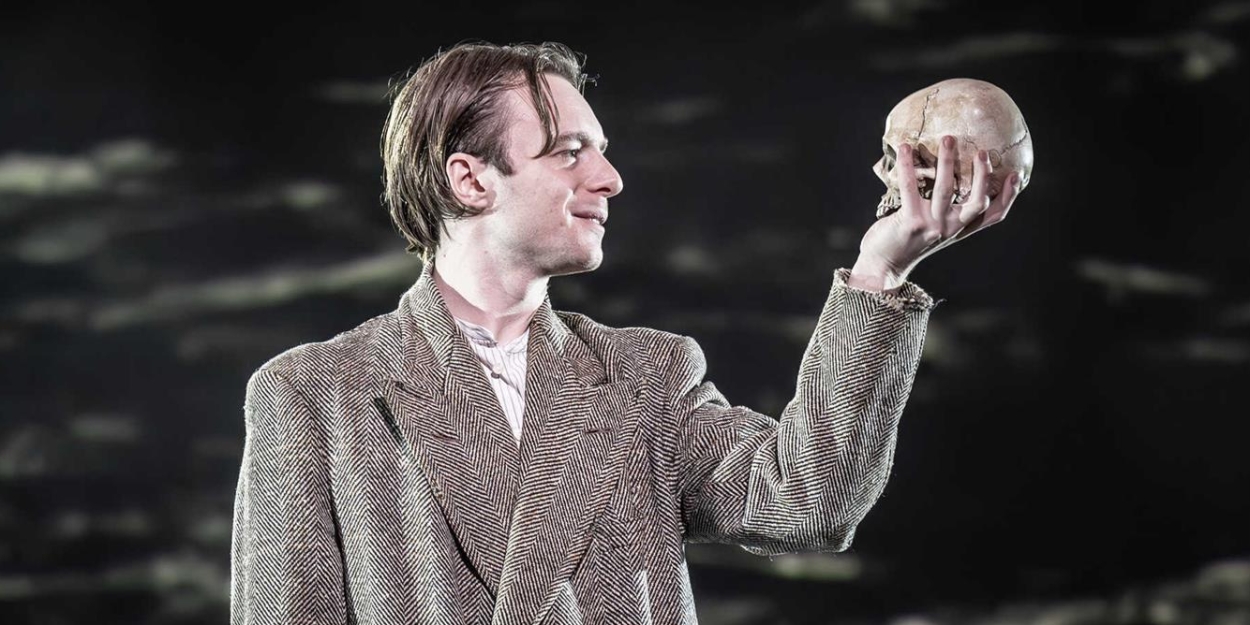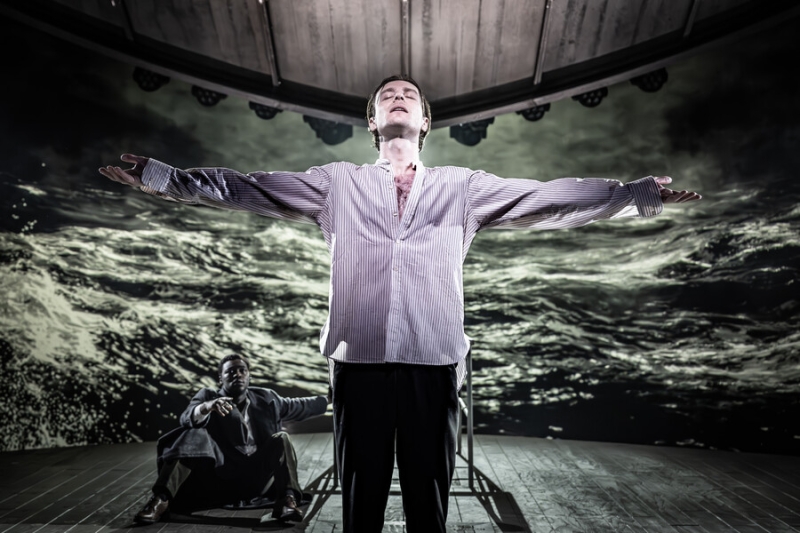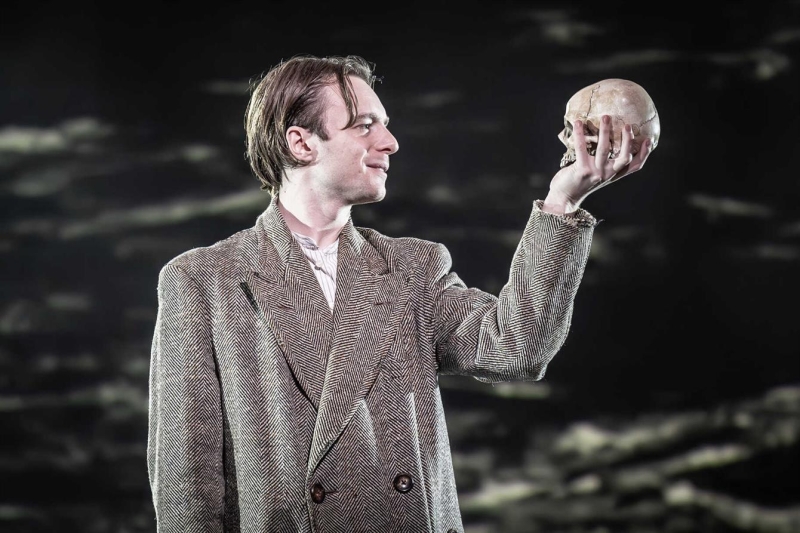Review: HAMLET, Starring Luke Thallon
Thallon is a titanic Hamlet in Rupert Goold’s nautical concept

![]()
What do Shakespeare and James Cameron have in common? Before Rupert Goold took hold of the Bard’s tragic masterpiece, the answer would have been ‘nothing’. The soon-to-be artistic director of The Old Vic returns to the Royal Shakespeare Company after 14 years to offer a blockbuster Hamlet. Elsinore becomes a royal battleship and everything happens in less than one night in April 1912. Goold makes some daring choices, placing a lot of faith in his public and letting them interpret and assume certain twists in his vision.
He bends and nearly breaks the text with Rebecca Latham’s dramaturgical help, at once showing how far you can go with a faithful adaptation but also exposing how thin the boundary between risk and ego can be. Though the time constraint threatens to destabilise the whole thing, Luke Thallon is mesmerising in the main role and Goold’s production has a concept strong enough to stay afloat when you accept its weaknesses. After all, if you’re staging the canon in Stratford-upon-Avon in 2025, you need to make it a bold concept. And Goold delivers.
Thallon is a titanic Hamlet, bringing a modern interiority to the plate and turning the character into a sullen poet who’s cultured, arrogant, and petulant enough to be attractive. His performance leans into the age-old question: is Hamlet really mad? Thallon answers with a rhythmic contemplation of humanity presented in impeccable RP accent.
Expressive and unafraid to dip freely into dark humour, his delivery is marked by the exacerbation of the beauty of the language. He cleverly narrows down the extensive query into the nature of Hamlet’s sudden change in behaviour by displaying the character’s “madness” only to a chosen few, who will then feed it to the king.

He turns to the audience in confession or inquiry, addressing his questions as if he expects a direct response from the darkness. “Am I a coward?” he pleads, only to immediately grimace to himself with a knowing look. He toys beautifully with the speed of his lines, peppering the dialogue and soliloquies with ironic grins or pain-stricken half-smiles.
We’re in front of a Hamlet who jumps off the page and lands into a real young man who’s just lost his father and uncovered cataclysmic treason at court. This is an intelligently sociable and deeply human Hamlet who knows how to speak to people and what they expect from him. He’s a step ahead of everybody else.
Goold surrounds him with a cast who tries their best to keep up with Hamlet’s light-speed thinking. Elliot Levey adds levity as a lovable Polonius with a pitch-perfect comic performance that makes us grieve his murder. A loving father, his direct addresses are exhilarating and his exchanges with Ophelia are awkwardly dad-like.
As the questionable royal couple, Jared Harris and Nancy Carroll share a deeply intimate bond. Where Harris subtly indulges in the power of his newly gained position, Carroll is a statuesque queen. A poised and distant mother, she can’t seem to relate to her son, who goes as far as threatening her at gunpoint before crumbling in her arms for comfort. Carroll’s stage time might be limited, but it’s crucial to our understanding of Thallon’s. So is Nia Towle’s Ophelia’s.
Towle is demure and utterly charming; she dotes on her beloved Hamlet, but doesn’t understand him. It’s the comparison with her failing mental health that highlights Hamlet’s retention of his sanity. Another very interesting idea is the decision to make Guildenstern and Rosencrantz (Tadeo Martinez and Chase Brown) American, which plays into Hamlet’s culturally varied upbringing.

The main element that makes this a spectacular take is due to Es Devlin’s contribution, who’s known to lift every set design she creates from mere background to real character. She does it again, crafting an enormous deck that jolts and tilts. A large screen at the back ominously displays choppy seas and wild clouds that result in the instability of Devlin’s ship. She shakes the visuals and increases the tension with movement while lighting designer Jack Knowles and composer Adam Cork work in tandem to create a ghostly nautical atmosphere.
Confining the play to one single night in April 1912 places a hazardous limitation on the project. This unnecessary restraint intensifies the pace of the story but brings forward a series of questions that surround its logistics. Goold’s choice heightens the stakes for some of the plot points, but jettisons some others. Being only gone for a few hours, did Laertes even reach France? How can the players just show up and Rosencrantz and Guildenstern simply be “sent for”? Hamlet never had any intention of being shipped off to England, did he? But he did most definitely kill his childhood friends here, didn’t he?
Goold continuously renegotiates the theatrical contract with the audience, asking them to collaborate and not just sit at the receiving end of it, filling the gaps between what they see and what they know. It’s a confident and audacious vision that won’t please the most traditionalist of punters, but it’s a lot of fun. Our final question is, why wasn’t the scene with the pirates included in some form or another? If there’s one production where it could fit, surely it’s this!
Read our interview with Elliot Levey about playing Polonious here.
Hamlet is at the Royal Shakespeare Theatre until 29 March
Photo Credits: Ikin Yum
Reader Reviews

Videos

